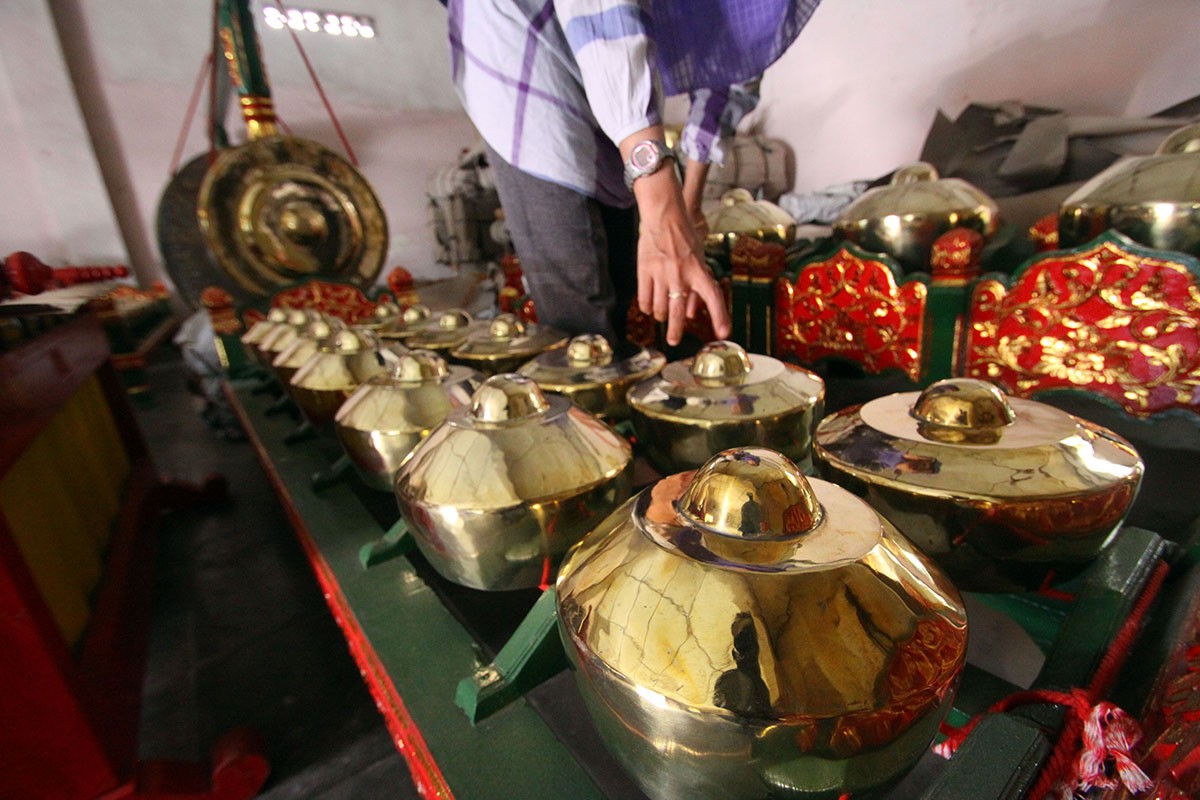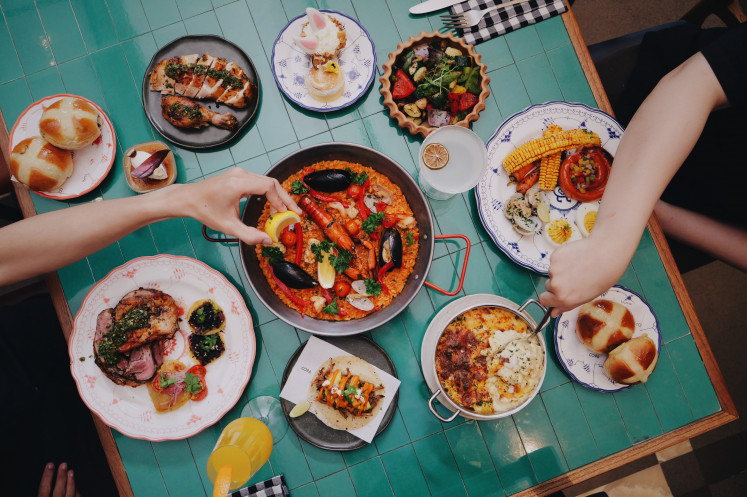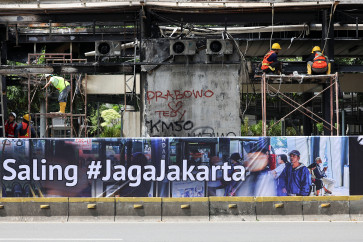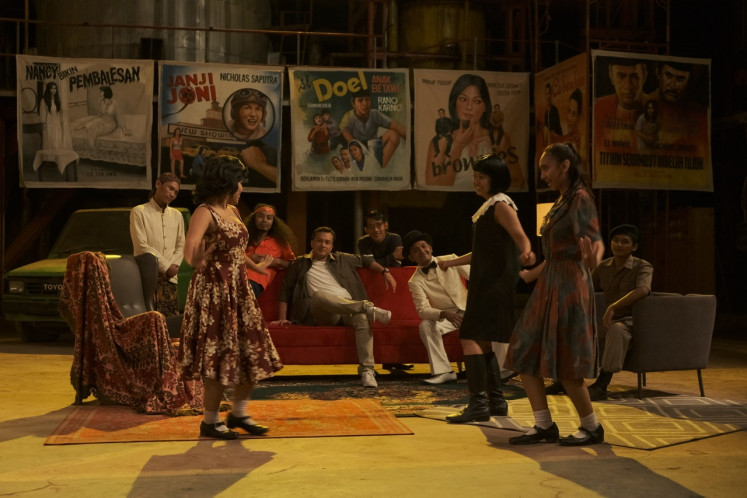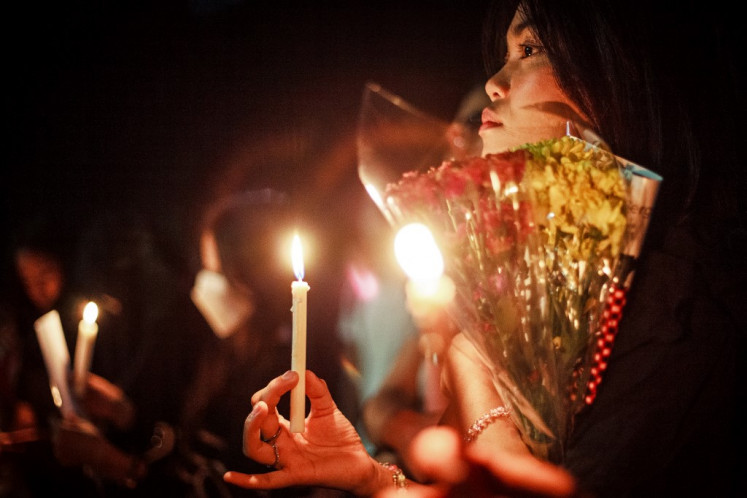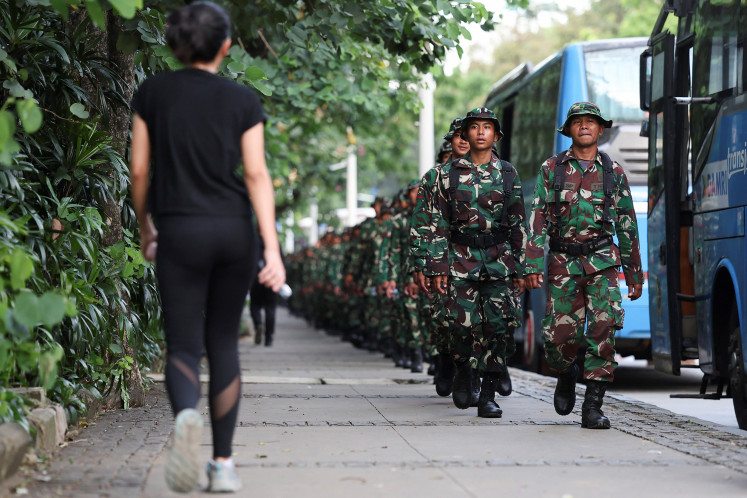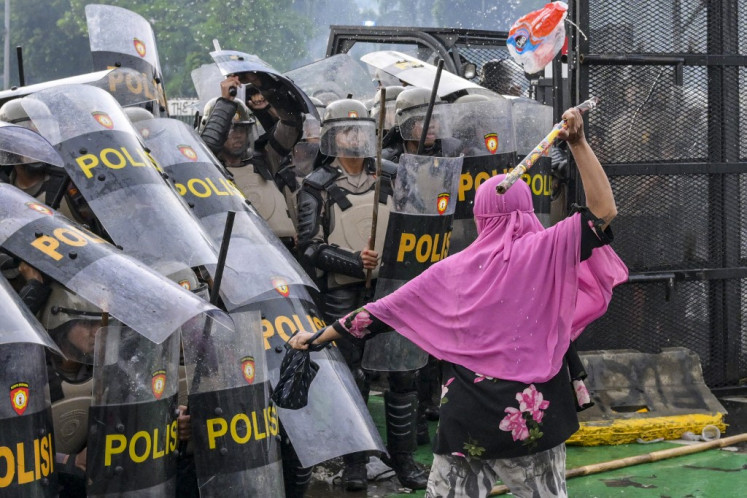Popular Reads
Top Results
Can't find what you're looking for?
View all search resultsPopular Reads
Top Results
Can't find what you're looking for?
View all search resultsRecalling the history of the gamelan
Javanese legend has its own explanation for the birth of the gamelan, which is that the Hindu god Siwa initiated its birth when he called for genta keleng (gongs) to be made.
Change text size
Gift Premium Articles
to Anyone
T
he "Gamelan artist-in-residence” program organized by the Indonesian Embassy in London and the Culture and Education Ministry will see Indonesian gamelan instructor Prasadiyanto share his skills and knowledge at the Royal Conservatoire of Scotland (RCS) in Glasgow, Scotland, from March to June.
Besides Prasadiyanto, who is from the Indonesian Arts Institute (ISI) Surakarta, Central Java, other gamelan instructors will also be in the UK to teach gamelan at universities across the country.
This makes me recall the wonderful sounds of gamelan music streaming out of a corner room at my university over seven years ago.
I remember myself sipping an iced mocha near The Coffee Club café and finding myself immersed in gamelan music by members of the Southeast Asian studies program. My reaction would be comparable to that of Francis Drake, the first European to record his reaction to gamelan when he visited Java in 1580. According to W. Fagg, who wrote “The Raffles Gamelan”, Drake had reported back then that the sounds of the gamelan “were of a very strange kind, yet the sound was pleasant and delightful”.
The word “gamelan”, as noted by Denise Hill who wrote about the “Practice and Social Evolution of the Javanese Gamelan”, was thought to be derived from the Javanese words “gamel” (to handle) and "gangsa" (bronze). It is often translated as orchestra.
Read also: Manado university choir to perform in London festival
A traditional gamelan performance consists of an ensemble that typically includes gong chimes, single bronze gongs, single and multi-octave metallophones, drums, flutes, bowed and plucked chordophones, a xylophone, small cymbals and singers. These instruments are often made of wood, bamboo and iron. Hill wrote that the number of instruments can range from 20 to 75.
There is no precise date for the emergence of the gamelan. Hill wrote that the prototype of the gong-chime was probably influenced by the bronze kettle drum of the Dongson culture, which is in present-day Vietnam, and came to Java around the third or second century BC during the Bronze-Iron age. M. Hood wrote that the ensemble-type arrangement that comprises of loud and soft sounds dated back to the 16th century.
Javanese legend has its own explanation for the birth of the gamelan, which is that the Hindu god Siwa initiated its birth when he called for genta keleng (gongs) to be made. Another legend involved the god Sang Hyang Guru, who ruled Java from his palace at the summit of the current Mt. Lawu in Central Java. As Sang Hyang Guru needed a signal to summon the gods, he made a gong that was tuned to a certain pitch to communicate his different messages. In the end, it was said that three drums were tuned to different tones to communicate the complexity of his messages. They became known as “Lokanatha or Lokananta” (King of the World).
Moving on to modern times, Hill wrote gamelan music was first played on the Dutch colonial radio station, Nederlands-Indisch Radio Omroep Maatschapping (NIROM), during the Dutch occupation. After Indonesia gained independence in Aug 1945, the government-funded station Radio Republik Indonesia (RRI) began regular broadcasts of different traditions and regional styles of gamelan in Sep 1945. In the 1960s, gamelan music was widely available on cassette. In fact, the largest recording company in the country, Lokananta, which was established in October 1956 in Surakarta, was named after the first gamelan.
Gamelan has also transcended religious boundaries. According to Hill, Catholic churches in Semarang and Yogyakarta have held gamelan masses for many years, and Ki Wasitodipuro, a famous composer, wrote many gamelan pieces on a Christian theme, although he was not a Christian. Just search the words “gamelan mass” on YouTube and you will find at least one video of gamelan being played at masses, including on Christmas Eve.
Read also: Classic Indonesian literature to be made into soap operas, films
Gamelan has also clearly crossed borders. Choosing to promote gamelan once again in the UK is a cultural milestone that should be applauded. According to arts journal Asian Theatre, the history of gamelan in the UK began in 1982 when the University of York became the first teaching institution to acquire a full Javanese gamelan after years of petitioning by lecturer Neil Sorrell, who joined the faculty in 1973.
Sorrell had commissioned Gamelan Sekar Petak (Gamelan of the White Flower) from the Tentrem Sarwanto workshop in Surakarta. Sorrell was part of the gamelan group at Wesleyan University in Middletown, Connecticut, US, and had been taught by the Indonesian musicians Prawotosa-putro and Shitalakshmi Prawirohardjo.
Before 1982, Javanese gamelans in the UK existed only at the Indonesian Embassy, which had brought them over in 1979. Thanks to Sorrell, interest in gamelan in the UK persists until today. From close to a hundred Central Javanese, Balinese and Sundanese gamelans in Britain in 2002, there are about 150 today.
There is hope that the presence of Prasadiyanto and the other gamelan instructors will allow gamelan to thrive not only in the UK, but across Europe, especially among the younger generation. (kes)
---------------
Interested to write for thejakartapost.com? We are looking for information and opinions from experts in a variety of fields or others with appropriate writing skills. The content must be original on the following topics: lifestyle ( beauty, fashion, food ), entertainment, science & technology, health, parenting, social media, travel, and sports. Send your piece to community@jakpost.com. For more information click here.

